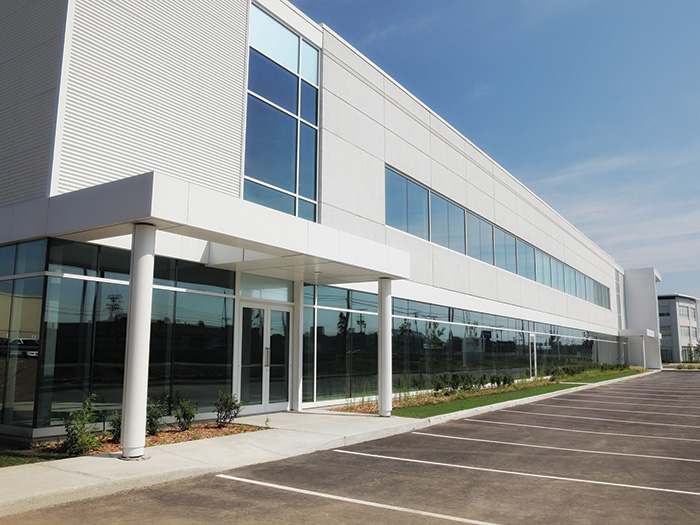Sponsored: Beecher Carlson
Cyber: A Tale of Two Markets

You know a risk category is mature when people start to refer to it as “traditional.”
The cyber market is a perfect example. Despite the evolving nature of cyber risk, the industry has developed a set of traditional coverages that are well understood by underwriters and buyers alike.
Those policies include both first- and third-party coverage for well-known risks like privacy liability, breach response costs, cyber extortion and lost revenue from a hack; however, non-traditional risks such as physical damage and bodily injury resulting from a cyber breach or system failure pose new threats and challenges.
The cyber insurance market has been growing at roughly 25 to 30 percent per year and is estimated to reach almost $3 billion in 2017, according to Chris Keegan, National Cyber Practice Leader, Beecher Carlson.
As the cyber market continues to grow, buyers need to gain a better understanding of both their traditional and non-traditional exposures and the coverage they have in place to address them. Meanwhile, the insurance industry is working to develop coordinated solutions to more cohesively address the variety of traditional and emerging cyber risks.
Understanding Exposures beyond Liability

Chris Keegan, National Cyber Practice Leader
Though “cyber liability” is the common term for cyber policies, liability is just the tip of the iceberg of cyber exposure.
“We have a taxonomy problem,” Keegan said. “The term ‘cyber liability’ is misleading because cyber is so much bigger than liability. Cyber is property policies. Cyber is recall policies. Cyber is crime policies. The cyber world encompasses many different risk areas.”
The most prominent cyber risk on risk managers’ minds is usually privacy liability. A breach of employees’ and customers’ personal information – whether through theft or negligence – that results in direct costs of notification, hiring forensics investigators and lawyers, and public relations damage control.
Another high-impact but underestimated cyber exposure is business interruption.
If the server hosting your company website or intranet goes down, how will your business be affected and for how long? What if it’s your cloud provider or the platform where you store data? How many locations will it affect? Not only will a system failure interrupt regular business operations, it can also require rebuilding and replacing any lost data or in some cases hardware.
“You have to understand your exposure first before you even start to think about insurance,” Keegan said.
Models are useful tools that paint a detailed picture of the risk.
“Beecher Carlson’s In-Site suite of models applies to traditional risk exposures like privacy liability and to some non-traditional aspects like cyber property damage,” explains Keegan.
The privacy calculator is a maximum probable loss model based on cost information from the largest breaches, fees charged by breach response vendors, and Beecher Carlson’s independent market research. Those data points are combined to create a calculator that estimates the impact of a breach event.
The business interruption model takes into account all of the immediate extra expenses that come with a breach or failure; it also considers how the impact trickles throughout a company’s various locations. This depends on the type of cyber event. A downed network, for example, may have greater impact than a ransomware attack at a specific location.
“You can take all of that information, input the different variables, and see what your maximum loss might be in different scenarios,” Keegan said. “This differs from more traditional business interruption models that focus only on the impact to specific locations.”
Assessing exposure means looking at more than just data. Insurance buyers in every industry have to consider the physical damages that can result from a cyber incident as well.
If the code directing robots at a manufacturing plant fails, for example, it could not only damage an expensive piece of machinery, but also damage the goods it’s producing and present a safety risk to workers in the vicinity.
For an energy producer, a malfunction in software controlling the flow of oil through a pipeline can cause it to blow up and pollute the environment. In the auto industry, cyber risk increases as cars become more digitized, opening them to hack via on-board systems that cause malfunctions.
“If a hacker disables the brakes, for example, there will be property damage to the car and bodily injury to the driver, both caused by a cyber event. The end result is a liability back to the auto manufacturer,” Keegan said.
“Some of this can be covered under traditional general liability and property policies, but there is no guarantee. Not every property/casualty market will offer this coverage.”
This inconsistency leads to what Keegan calls “Swiss cheese towers” of coverage, where there may be coverage for cyber-related physical damage at the primary level, but further up the tower there are holes and gaps.
Mind the Tower Gaps
Cyber coverage can be found in a variety of different policies, resulting in both overlaps and gaps in coverage for some exposures.
Buyers are looking for a cohesive, streamlined solution to cover all of their cyber risks efficiently. And underwriters grapple with how to factor in “silent” cyber coverages, which respond to unexpected cyber events that fall outside the scope of risk for which the coverage was originally built.
Once the extent of a risk is understood, buyers should examine their cyber coverage across all of their policies and look for the gaps that need filling.
Increasingly, property/casualty insurers are able to tack cyber coverage onto property programs on a sub-limited basis, but the terms may vary from form to form. Ultimately, new solutions are needed to handle the full capacity of potential cyber-related losses.
“Excess DIC/DIL – or difference in conditions / difference in limits coverage – is one option that’s not yet offered widely by the markets but presents a promising solution,” Keegan said. Excess DIC/ DIL would sit on top of other designated policies and fill in the gaps between those policies. Broader cyber coverage that includes traditional and non-traditional risks can be coordinated with property and casualty policies when the details of those policies are disclosed.
“This comes back to knowing your exposure. You need to know which policies this coverage should be in excess of in order to be sure it drops down and fills in gaps where it needs to,” Keegan continued.
Luckily, Keegan and other cyber leaders are working on developing more streamlined solutions.
“Technology is changing rapidly,” he said. “To be effective, the insurance that covers it has to adapt just as rapidly.”
To learn more about Beecher Carlson’s Cyber Risk, Cyber Liability practice, visit http://www.beechercarlson.com/services-delivered/cyber-liability.
This article was produced by the R&I Brand Studio, a unit of the advertising department of Risk & Insurance, in collaboration with Beecher Carlson. The editorial staff of Risk & Insurance had no role in its preparation.










